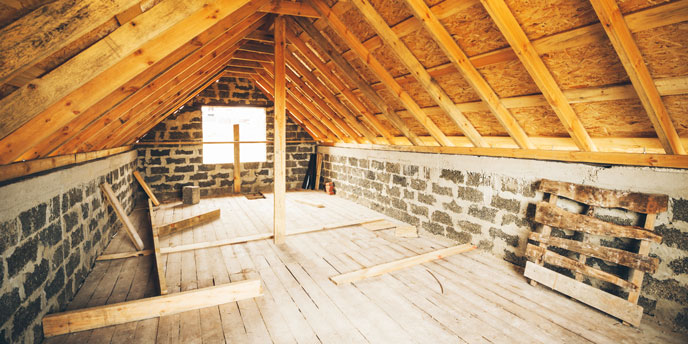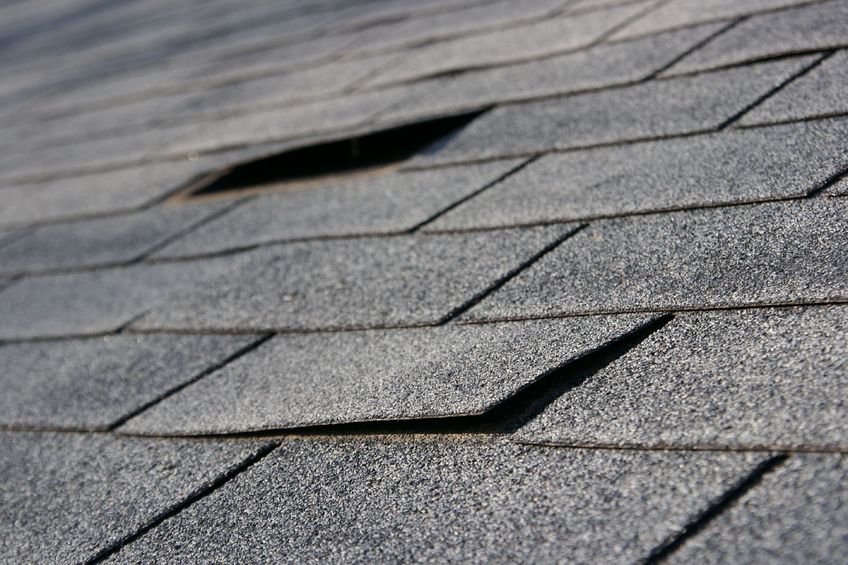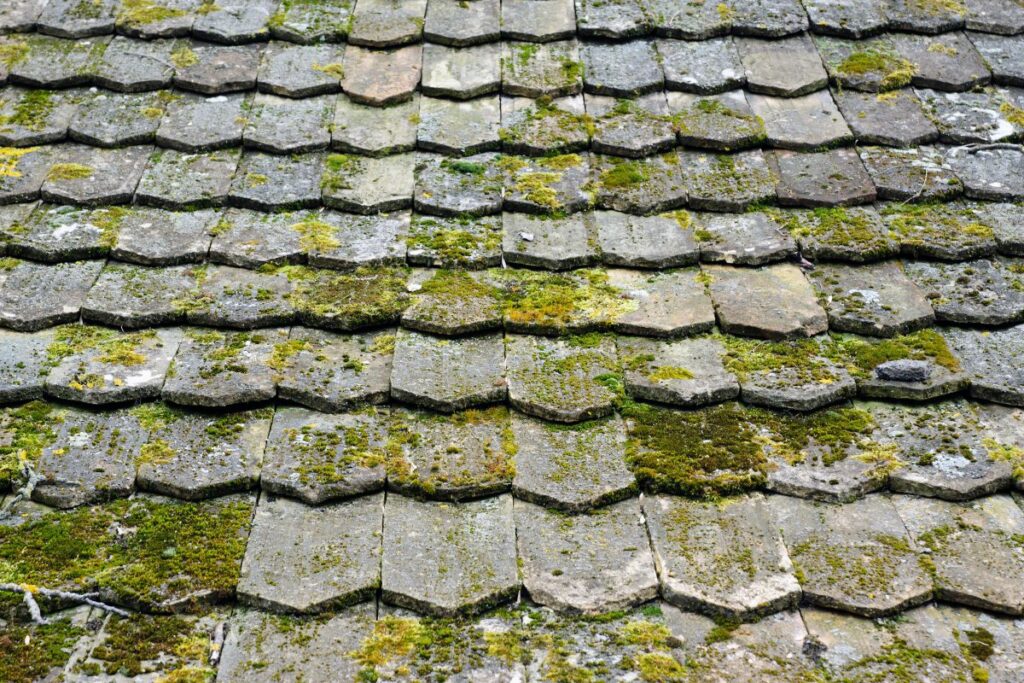
When you buy a house, you know in the back of your mind that eventually, whether you like it or not, you are going to need to replace the roof. But sometimes it may not be easy to tell when your current roof is on its last leg. Clear signs like a water leak will be obvious immediately, and missing shingles will likely be visible to you whenever you drive up to your home. However, there are many tell-tale signs that your roof may be suffering from hidden damage, and these are signs you can find out about long before an actual leak has occurred.
Many of the suggestion below are things you can see with your naked eye from ground level, or by popping into your attic. Other things require actually heading up onto your roof. Unless you are extremely steady and comfortable on a ladder, consider leaving this part of the inspection to a licensed roof repair professional. If you are able to conduct a basic inspection yourself, experts recommend that you do so twice each year, once in the spring and once in the fall, and again after any significant weather event.
Check Your Roof’s Paperwork, and Keep Track of It
The best way to estimate when you will need a new roof is to know exactly how old your current roof is and what it is made of. If you are the original owner of your home, keeping up with this information is easy. Otherwise this information should appear in the inspection record of your home. If you are unsure the age of your roof, pay attention to when other homes in your neighborhood are being re-roofed. It is very likely that the homes in your neighborhood were all built around the same time, and that their roofs will be about the same age. When the other roofs in the neighborhood start to go, yours will not be far behind.

When you have your roof reshingled, keep in mind that typical asphalt shingles will last from 20-25 years, while a roof installed over an existing layer of shingles will usually last 18-20 years. When roofing is installed over existing shingles, this can lead to ventilation issues. You should avoid this method of cheap roof repair, as it can cause even more damage to your home over time. The added weight means it is essentially like giving your home two roofs to support, and will cause the shingles to absorb more heat than necessary leading to premature deterioration.
There are other materials you may choose when deciding on a new roof, with varying life expectancies. Wood shingles last 30 to 40 years while clay tiles can be expected to last from 20 to 40 years. A metal roof may last as long as 70 years, while slate is by far the longest lasting roofing material, at around 100 years life expectancy.
Inspect Your Roof for Leaking Light, Not Just Water
If you are wondering how your roof is doing, start by checking things out in your attic. Long before enough water has leaked through to be apparent on the ceiling of your home’s upper floor, you’ll be able to find small cracks and weak spots in your roof by looking for places where light is trickling in. Be sure to check all over the attic, especially under eaves. Remember, anywhere light can come in, water and cold air can too.

Water Leaks are the Surest Sign of a Roof in Need of Repair
This one just makes sense. However, you don’t want to wait until leaking water appears on the ceiling. Check things out in your attic regularly, especially after a significant rainfall. Look closely for any signs of moisture in the rafters, and check for any dampness in your insulation. By the time you see water staining or leaking your inside ceiling, there is likely a significant amount of damage that has already occurred inside your attic, both to the roof and the wooden support beams. The sooner you spot small amounts of moisture that shouldn’t be there, the less time and money you will spend on repairs later.
Check the Flashing for Cracks
The flashing around your roof’s features such as skylights, vents and chimneys is what seals your roof at the seams, protecting from rain and weather. Make sure these potential points of moisture entry are free from cracks and breaks. In older homes, this flashing is often made of roof cement or tar, but in newer homes a metal flashing system has likely been used. This sort of flashing is much more durable, so if you have the older style of flashing, consider upgrading when you have your roof replaced. All such openings where flashing appears should also have their seals checked.
The good news with flashing is that it’s possible that if you have your flashing repaired or replaced, that your roof itself will not need to be replaced just yet. Cracked flashing can lead to leaks and damage inside your home, so addressing this problem quickly is important.
Your Shingles Appearance Can Tell You A Lot About Your Roof’s Condition
Take a look at your shingles periodically, and especially after a heavy storm with a lot of wind and rain. Shingles should always lie flat against your roof. If you see any that are cracked or buckling, you should call a professional in to inspect the damage and assess the extensiveness of repairs needed. What if you see such buckling and curving on a roof that isn’t very old? This could be a sign that your roof is defective. If so, you may be eligible for reimbursement and/or replacement.

Damaged shingles are especially detrimental if they occur in the valleys where water naturally flows down and off your roof into gutters and downspouts. Also, here’s something else you might not think of when it comes to your shingles. Check your gutters and downspouts for shingle granules. A roof losing a lot of granules is a sign of wear, and when this occurs you can expect that you will need your roof replaced soon.
A Saggy Roof is a Sign of Problems
If your roof says or droops in spots, this is a sure sign that it needs to be replaced. The places where the roof is sagging are an indication of trapped moisture and rotting boards. You will also notice this issue if you walk around on the roof to do your own inspection. Any spots with a spongy feel or that seem to have a trampoline bounce as you walk, are likely caused by underlying weakening from moisture. Sagging may also mean that you have serious issues with your roof’s support beams and studs.
You should also check the underside of your roof for any sagging, by looking at the ceiling in your attic. If you encounter a sagging spot in an attic or top story of your home, use your hand or a broom to lightly push upon the sagging spot. If the spot feels soft and wet or bends easily when pressed, you very likely have moisture damage. Sagging spots in a roof mean you need to call a professional immediately.
Rooftop Vegetation Means Trouble
The appearance of moss growing in the shadier corners of your roof is never a good omen. Moss on a roof might be attractive to some, with its forest green color, but it can also be an indicator of trapped moisture within your roof. When your shingles have moss covering them, this can make them deteriorate much more quickly. When mold is present, it’s a good idea to schedule a thorough roof inspection.

What if the moss has not yet caused damage? Can you simply brush it off? The answer is yes, but moss is likely to grow back, especially in weather where your roof remains cool and moist. You also need to be very careful not to damage the surface of your shingles when brushing off the moss. If you don’t want to take chances on damaging shingles with a brush, you may want to consider getting rid of the moss with a cleanser instead. Mix up a solution that is one part bleach and one part water to remove algae or moss. Or ask a roofing professional about zinc strips that can be installed at roof peaks and will eventually eliminate the moss problem.
Your Roof Could be to Blame for Rising Energy Costs
Incremental increases in your energy costs could signal a problem with your roof. A roof that has been poorly insulated will allow too much air to enter and exit, gradually increasing your energy bills as your HVAC system works harder to keep up. This is especially an issue during colder months.
If you are considering selling your home any time soon, it is immensely important that you take care of any issues with your roof ahead of time. Have your roof thoroughly inspected by a licensed roofing professional, and if possible, have any repairs or replacements made before listing your home for sale. More than a few home sales are lost each year due to disagreements about a roof that needs to be replaced. Even in a sellers market like the one we have currently, buyers do not want to replace a roof right off the bat, and they will likely shy away from purchasing your home if a roof is needed. Not only will you lose money on the sale if you do get buyers to commit to a roof they must replace, but you may put your prospective buyers in a bind with their lender. Many mortgages have fallen through simply because the home being purchased was in need of a roof.

